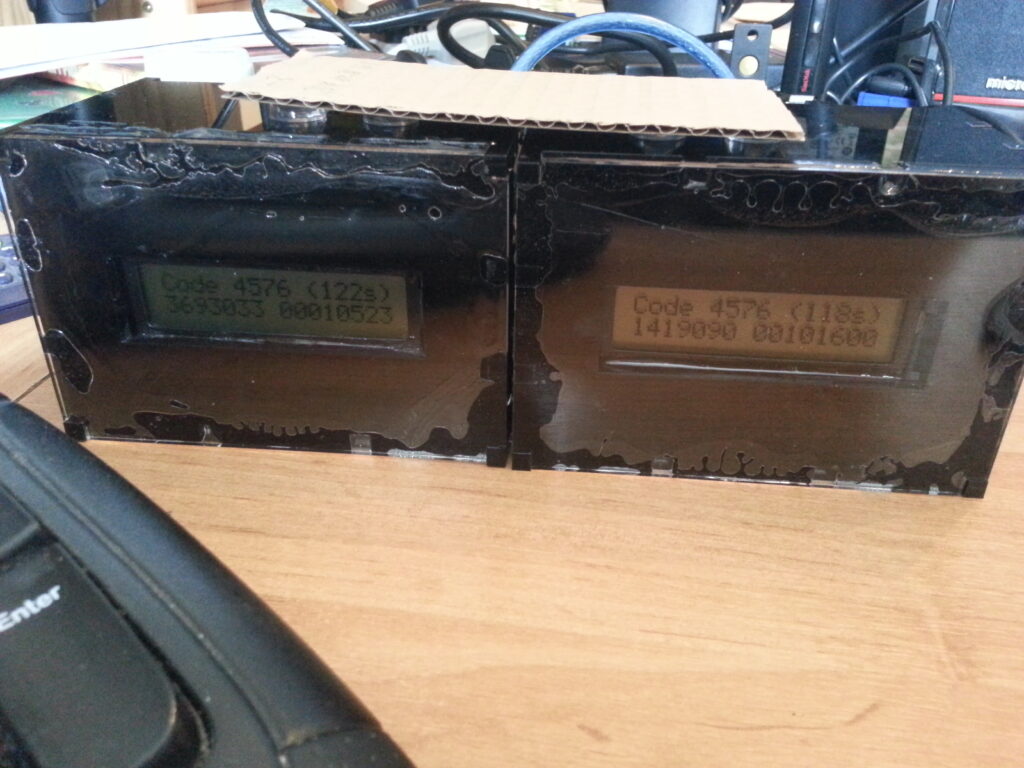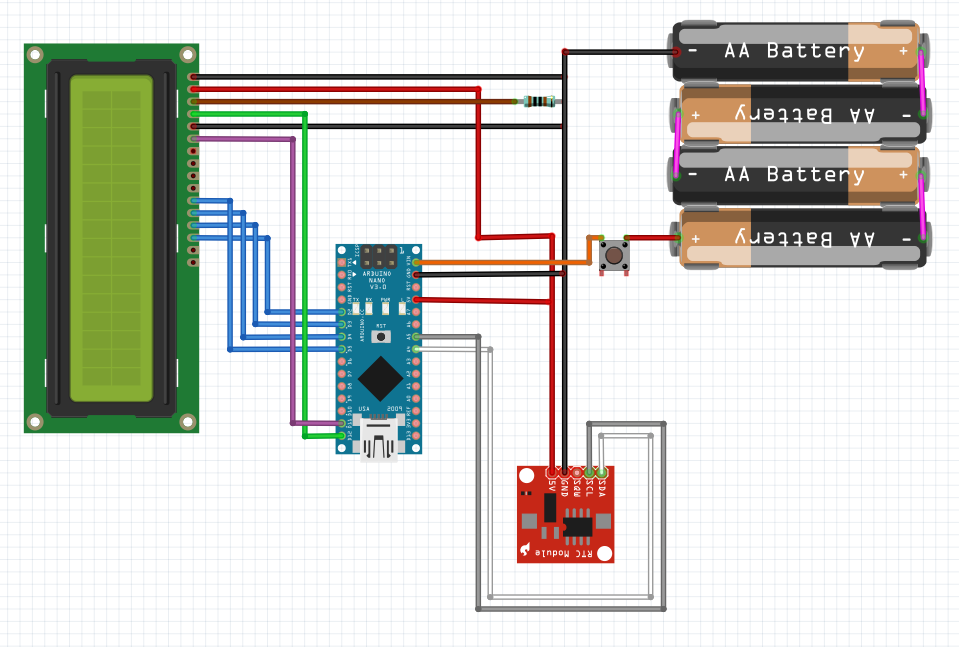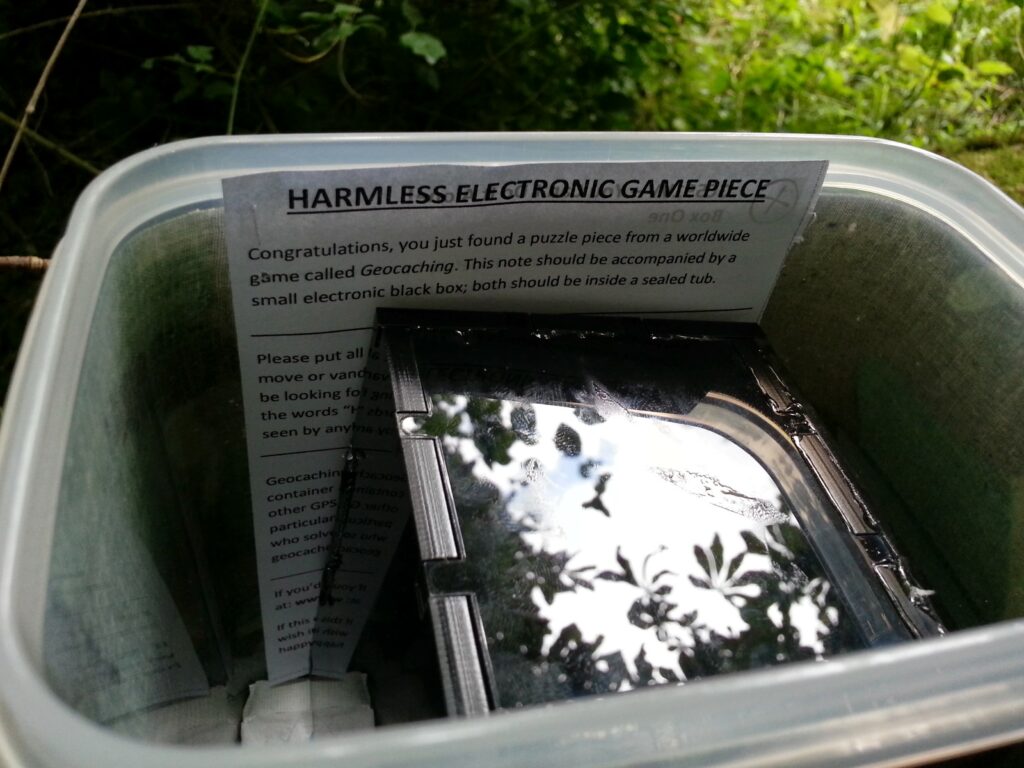Hot on the heels of the Oxford Steganography Series, a series of “hidden in plain sight”-themed geocaches I placed earlier this year, I’ve recently placed another geocache – GC591VV – and I think that – conceptually – it might be completely unique.
Spoiler warning: this article contains minor spoilers about Oxford-based geocache GC591VV – “You Can’t Do It Alone”. You won’t find any shortcuts by reading this page, but you might ruin part of the surprise.

The cache’s name is the first clue that there’s something unusual about it, and this theme continues in its description, where it insists that this is a cache that is impossible to find by yourself. Experienced ‘cachers may have come across geocaches that benefit from a second pair of hands: usually to help “bunk you up” to a high spot. Some really clever caches use your “buddy” to press a battery-powered radio doorbell while you “listen” for the cache’s hiding place nearby, or use your friend to stop up the holes in a pipe as you pour water into it (in order to raise a floating cache to the surface). But every single one of these has a “workaround” – a way in which you can do it by yourself, if you’re imaginative enough. I wanted to make a cache that genuinely required two people.

The cache description page repeatedly insists that to solve the cache, you need you and a friend to simultaneously visit two different waypoints. When you and your friend get there, you discover why: at each, I’ve hidden a small electronic device, specially-built for this purpose (and instructions on how to use it). The two devices are a synchronised pair, and each shows on its screen a pair of numbers. To find the location of the cache itself, you need to add the first number on Box One’s screen to the first number on Box Two’s screen… and the second number on Box One’s screen to the second number on Box Two’s screen. But… the numbers change every 15 minutes: and because both boxes are hidden on opposite sides of Oxford, there’s no way to get from one to the other within the narrow window. Truly: you can’t do it alone!

Once the two cachers have each other’s numbers, they can head on to the final coordinates: the actual location of the cache: they can race there, if they like (it’s close-to equidistant from the two points) – though if they’re feeling that competitive, they’ll probably want to agree on some key exchange mechanism by which they can swap numbers without giving the person to speak first a disadvantage: I’ll leave that mathematical exercise for somebody else to solve, though! In any case, I’ve been sure to put two “first to find” prizes into the cache: one for each of the people who worked together to find it.

How does this magic work? Well, it’s reasonably simple, so long as you’re familiar with the conceptual workings of time-based two-factor tokens and the predictability of computer random number generators. I’m offering the source code and support in construction to anybody who successfully finds the cache, in order to try to inspire a new generation of digital caches in Oxfordshire (and further afield!). But the essence of it is an ATmega328 chip acting like an Arduino Nano, hooked up to a clock chip (powered by a long-life lithium “watch battery”) that keeps it in sync with its partner, and – while a switch is pushed – fully-powered by a stack of AA batteries (which provide enough power to do the maths and light up the screen).

The whole package is sealed up inside a custom-built acrylic box (courtesy of RazorLAB, whom I discovered after Rory did a craft project using them), and I’m hoping that they’ll live at least a year before I need to get out there and replace the AA batteries.
This cache represents a huge leap in complexity over anything I’ve placed before, and – I think! – might be completely unique in design, worldwide. I’m really looking forward to seeing what the community make of it! Want to go find it yourself? Start here!
Update (2018): This cache has now been retired. If you’re interested, you can read the source code here.
“Given how alarmed people sometimes get when they find sealed black boxes with digital screens, slowly counting down, I decided to include a reassuring note with each box.” hahaha, I think that was rather a good idea….
Glad to see that the bunny TB is in the pic at the top there! :D